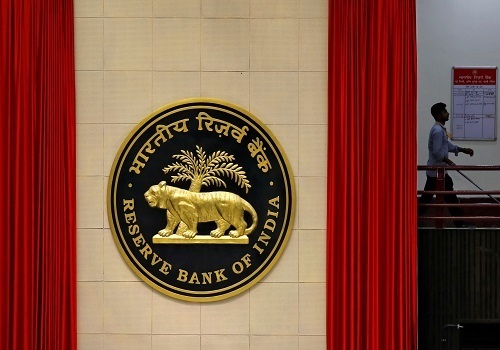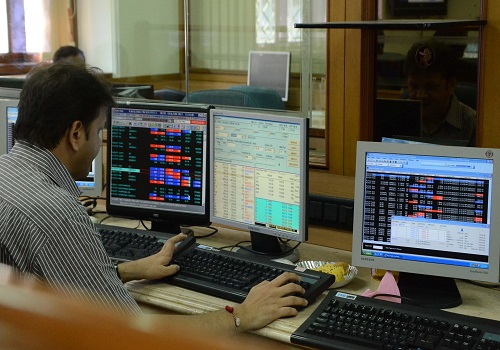Telecom Sector Update - 4 year breather for VIL, albeit tariff revival remains uncertain By JM Financial

Follow us Now on Telegram ! Get daily 10 - 12 important updates on Business, Finance and Investment. Join our Telegram Channel
4 year breather for VIL, albeit tariff revival remains uncertain
The Union Cabinet today approved reforms in the Telecom sector – both near and medium term – which should improve the outlook for all the players in the sector. While the key medium term reforms include rationalisation of the AGR definition, removal of spectrum usage charges (SUC) for future auction, increase in the payment period for the deferred spectrum dues from current 20 years to 30 years, and creation of a spectrum auction calendar which should aid telcos to stagger their spectrum purchase decisions in line with the ramp up plans, the near term measure includes 4 year moratorium on both spectrum and AGR dues effective 1st Oct’21 – however this is revenue neutral as telcos would have to pay the interest rates for the intervening period, so that government’s revenues are protected.
While the moratorium ensures survivability of VIL in the near to medium term, we believe even Bharti and Jio would benefit from this decision – Bharti’ cash flows are likely to further improve while Jio can increase its focus on its customer acquisition strategy without the overhang of a regulatory nudge to hike tariffs at present. However, the above reforms only address the liquidity stress in the sector and does not solve the elevated leverage levels in the sector.
Sustainability of the sector is still predicated on tariff revivals - we believe that govt needs to implement more structural reforms (in absence of Jio’s willingness to increase tariff) like: a) introduction of a floor tariff across the sector; or b) setting up a mechanism to ensure that tariff hikes are taken in a sustainable manner going forward.
* Moratorium ensures near to medium term survivability of VIL:
The moratorium improves VIL’s cash flow by INR 91bn in FY22 (the AGR payments), while over FY23 to FY26, it improves cash flow by INR 249bn p.a. (INR 158bn of spectrum payments + INR 91bn of AGR payments p.a.). As highlighted in Exhibit 3, even without assuming a fund raise for VIL, the ARPU requirement for VIL comes down significantly to INR120-130 by FY23E (vs. ARPU of INR 240-250 by FY23E required with fund raise but with no moratoriums).
This compares to the 1QFY22 ARPU of INR 104, indicating that there is no immediate requirement for tariff hike, given the ARPU hike would flow through from the organic 2G -4G upgrades itself. This in our view, improves the near to medium term survivability significantly, although we note that over the longer term, tariff hikes are inevitable given VIL need to pay off the accumulated interest also post the end of the moratorium.
Note that this could also improve VIL’s capex from the current levels of INR 9-10bn/quarter, although any significant increase in capex would require fund raise by the company/ selling of non-core assets. Moreover, government has given telcos an option to pay the interest during moratorium through equity and option to convert the deferred payment liabilities at the end of 4 years into equity at the direction of the government, though the guidelines regarding the same has to be finalised. This, in our view, gives further cushion to VIL in case of an adverse event of stagnant tariff hikes over the next 4 years.
* Bharti’s cash flow improves further allowing increased capex or faster debt repayment:
While Bharti has sufficient liquidity to meet near term payments, and as such we do not view the moratoriums to be a game changer for Bharti, nevertheless the INR 115-130bn extra cash flow p.a. (INR 75-90bnof spectrum payments + ~INR 40bn of AGR payments) over the FY23 to FY26 could provide Bharti with more leeway to either pay down the debt (debt details given in Exhibit 4) or utilise for faster capex ramp up in 5G/ FTTH and hence fortify the leadership amongst premium customers.
* Overhang of regulatory nudge for tariff hikes removed for Jio:
Though indirectly, we believe this moratorium also gives some operational headway for Jio to focus on its subscriber acquisition strategy, without having to worry about a regulator nudge to increase tariffs (given VIL can survive without any tariff hike for next 2-3 years) which could have otherwise impacted its subscriber acquisition as well as plans to upgrade industry 2G users to Jio’s network using Jiophone/Jiophone Next.
* Other structural changes:
Apart from the moratorium on spectrum payments, the government announced certain key structural changes as highlighted in Exhibit 1. Though the financial impact of the reforms is likely to be limited in the medium term, the reforms significantly improve the operational predictability for the companies (creation of spectrum calendar, rationalisation of AGR definition etc.) and facilitate flexibility in capex decisions (ability to surrender spectrum after 10-year lock-in).
* However, Tariff revival remains uncertain:
Though these measures strongly signals the intention of government to have a ‘3+1’ player market, improves near to medium term prospect across companies, and improves the ‘Ease of Doing Business’ in the sector, nevertheless the current reforms only address the liquidity stress in the sector and does not solve the elevated leverage levels in the sector (though it prevents a future flare-up of leverage through measures like ability to surrender spectrum), with the crisis being postponed to FY26-27.
Sustainability of the sector is still predicated on tariff revivals - we believe that govt needs to implement more structural reforms (in absence of Jio’s willingness to increase tariff till it gets closer to its 500mn subscriber target), like a) introduction of a floor tariff across the sector – though we see limited likelihood of this been implemented given the Covid induced distress across customer segments or b) mechanism to ensure that tariff hikes are taken in a sustainable manner going forward – we believe that rather than one-time nudges (as seen in the Dec’19 tariff hike of 30- 40%) by the regulator, tariffs need to increase in a sustainable manner so that the attractiveness and investability of sector improves. However, we note that in the long run, the tariffs should revive without constant intervention by the government to ensure sustainable, predictable growth in the sector and attract further investments in new technologies.
To Read Complete Report & Disclaimer Click Here
Please refer disclaimer at https://www.jmfl.com/disclaimer
CIN Number : L67120MH1986PLC038784
Above views are of the author and not of the website kindly read disclaimer










Top News

RBI comes out with detailed framework for outsourcing of activities by Payment System Operators
More News

Cement Sector Update - A subdued January thus far By Motilal Oswal





 320-x-100_uti_gold.jpg" alt="Advertisement">
320-x-100_uti_gold.jpg" alt="Advertisement">







